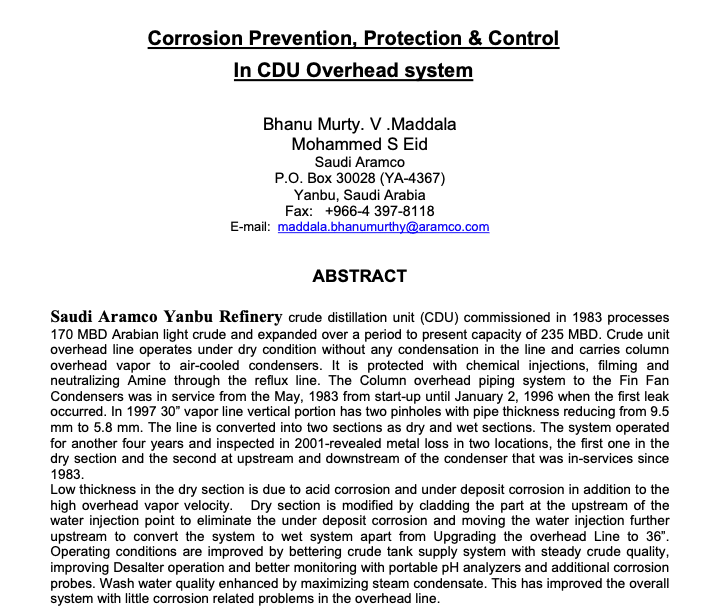Siddz
Chemical
- Mar 21, 2024
- 9
Hi, hope all you are well. Any one work on process envelop of refinery its means that work on damage mechanism in refinery, such that the top product of CDU is naphtha what was the effect of naptha at which temperature in pipe and the composition present in it cause which effect. Any one which has knowledge and working on reinery equipmentand product causes damage mechanism please share with me. thanks

